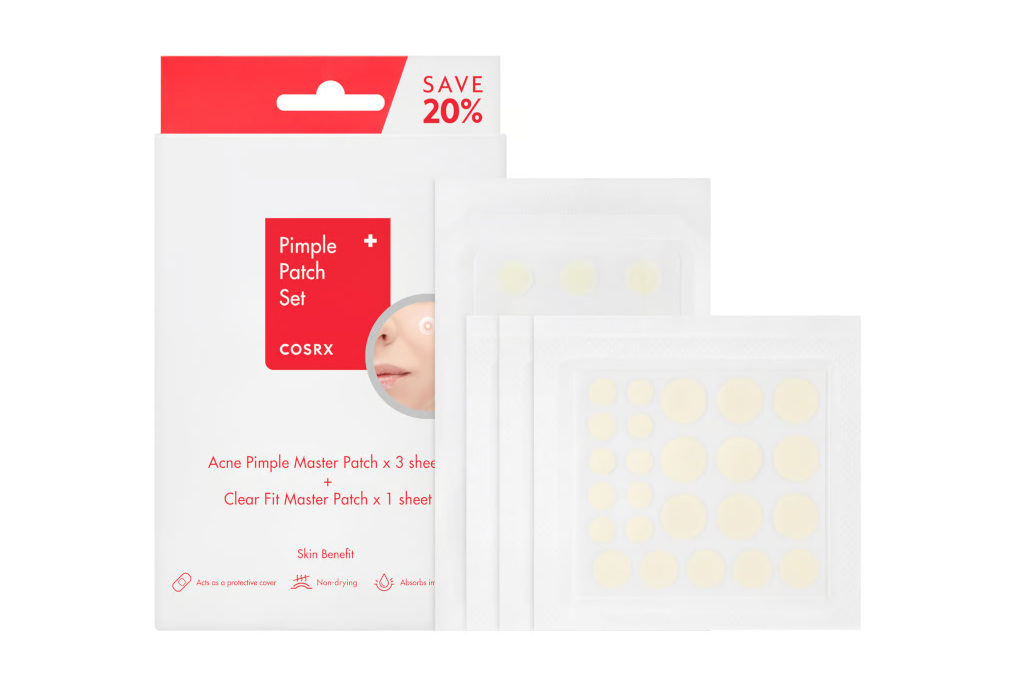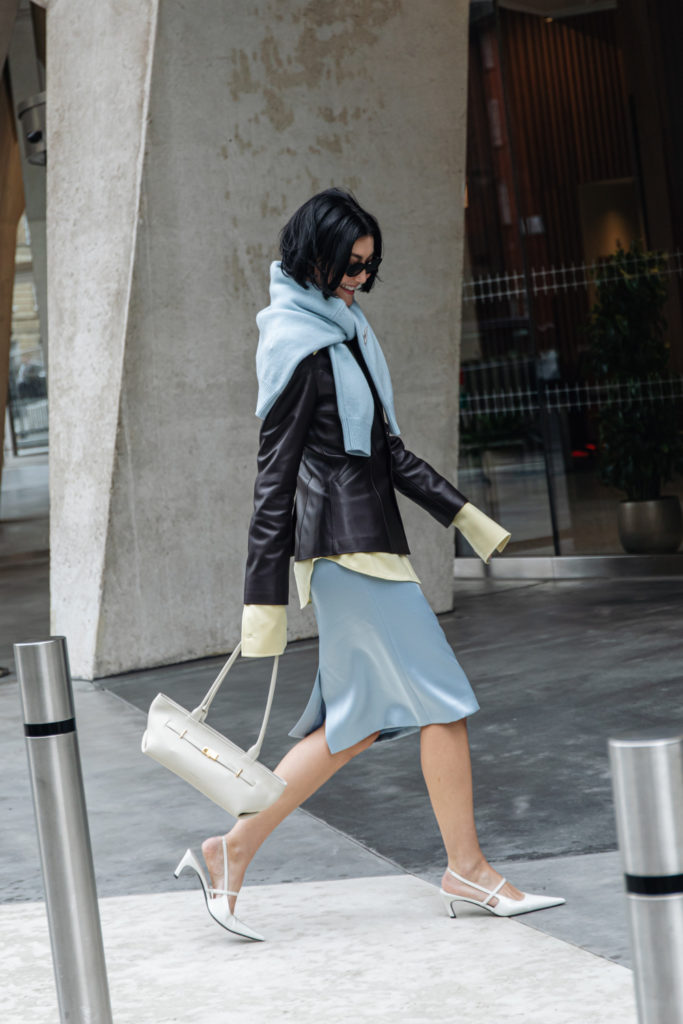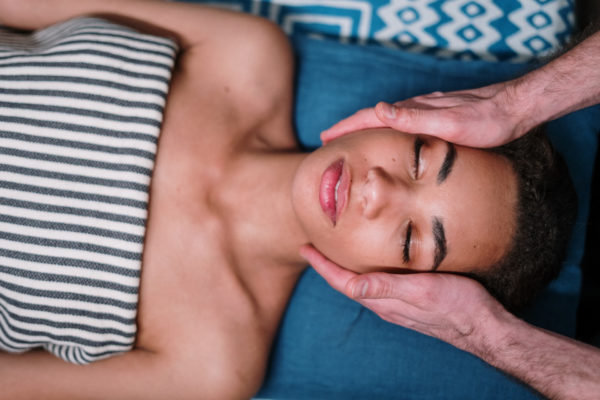Inside The Pimple Patch Craze (& Whether They Really Work)
By
2 years ago
Going through a rough patch? Not anymore

Sick of frequent flare-ups and pimple popping? You’re not the only one – transeasonal weather gets to even the best of us. Face your problems head on with the latest skincare trend: pimple patches. Small but mighty, these little stickers are guaranteed to wrangle even the most stubborn of zits. We’ve asked the experts just how they work and how to use them, so you can give them a whirl knowing what to expect. Happy patching.
The Country & Town House Responsible Buyers’ Guide
What Are Pimple Patches?
‘Pimple patches, or acne stickers as they’re sometimes known, is a small plaster or patch which is applied on top of a pimple or spot with the intention of accelerating the healing process and making the pimple heal quicker,’ says Dr Sebastian Bejma, Advanced aesthetic doctor with a focus on Skin Tech, and MD of Dr Bejma Medical Clinic. ‘Generally speaking, pimple patches cover the wound to prevent trauma from external sources, such as squeezing or picking – and they’ve become really popular in recent years as part of a regular skincare routine.’
Are There Different Types Of Pimple Patches?
Just like face masks or serums, there are different pimple patches that can be used for specific pimple-related issues. ‘Pimple patches come in lots of different sizes and brands but possibly the biggest difference is between those that are hydrocolloid, and non-hydrocolloid,’ says Dr Bejma. ‘Hydrocolloid pimple patches are usually recommended for use on spots that contain pus or whiteheads, because of the fact that they can absorb moisture and prevent the area becoming invaded by bacteria. They are usually thicker in appearance and more yellow in colour.’
But what exactly is hydrocolloid, and what does it do? ‘Hydrocolloid is a polymer, which means it forms a gel when mixed with water. This creates moisture to help aid skin healing and soak up the contents of the spot,’ explains Dr Bejma. ‘Traditionally, it was used in medical settings to draw out fluid from a wound, but more recently it was discovered that they can help acne to heal too by absorbing fluid from the spot and protecting against infection. Hydrocolloid pimple patches usually come with an inner layer made of gel-based hydrocolloid which absorbs anything from the pimple, aiding healing, combined with a silicone outer layer which helps keep the area clean.
‘While hydrocolloid pimple patches may help to dry out the spot and acne-fighting ingredients may help to reduce inflammation, some argue that their main benefit is the fact that they prevent the spot being squeezed,’ he adds. ‘This can cause bacteria and infection to spread, delay healing, and also cause acne-scarring.’
In contrast, other pimple patches (or non-hydrocolloid patches) use other ingredients to help fight pimples. As Dr Bejma tells us: ‘Other types of pimple patches are non-hydrocolloid and are sometimes impregnated with active ingredients such as salicylic acid to help fight acne. Some people believe that these are better for spots that don’t yet have a white head or pus at the end. These are also typically thinner and more transparent, which means that the barrier protecting the skin and the pimple from external disruptors isn’t always as strong.’
Do They Work For All Skin Types?
The short answer: yes. But be wary if you have sensitive skin. ‘Most pimple patches will work for most skin types,’ confirms Dr Bejma. ‘However, for people with sensitive skin some of the patches or the ingredients in them (for example, salicylic acid or tea tree oil) may cause irritation. If you experience sensitive skin then it’s important to exercise caution and try for a short period of time at first.’
How Long & How Often Can You Wear Them?
You choice of patch will determine how long and how often you can wear them for, says Dr Bejma, as it usually depends on the ingredients used. ‘Some are designed to wear for a couple of hours, some overnight and some are designed to be discreet enough to wear out during the daytime too,’ he tells us. ‘Some daytime patches are also fun and colourful, so that they make a statement and also fight acne stigma.’
Tips On Applying (& Removing) Pimple Patches
‘It’s important that you only apply pimple patches to clean, dry skin,’ advises Dr Bejma. ‘So ensure that you thoroughly cleanse skin and dry it first. Then follow the instructions specific to that particular patch to ensure you wear it for the correct amount of time.’
In terms of general application, the doctor recommends you ‘ensure that your hands are washed, clean and dry and that you pick a patch that fits the whole pimple in the centre. Then apply by pressing gently onto the clean and dry skin.’
Similar rules apply when taking the patch off – so start with clean, dry hands. ‘It’s important to remove the patch before the skin becomes dry and flaky,’ Dr Bejma adds. ‘After, make sure to wash your face, then exfoliate and moisturise.’
Why Do Pimple Patches Turn White?
Ever found yourself grossed out by the slightly sickly look your pimple patch takes on as you wear it? While a bit icky, Dr Bejma explains that it’s simply showing that the patch is doing its job (and no, it’s not pus that’s making the patch turn white). ‘There is a common misconception that pimple patches turn white because of the pus draining from the spot, however, this is not the case,’ he tells us. ‘In truth, this colour change is down to an enzymatic reaction with the hydrocolloid. Usually the colour change is a sign that the patch is ready to be removed.’
Are There Any Risks With Using – Or Overusing – Pimple Patches?
As the saying goes, sometimes you can have too much of a good thing. ‘Using pimple patches too often can risk causing the skin to become overly dry or irritated,’ warns Dr Bejma. ‘It’s important to remember that using pimple patches is not a long-term solution for addressing spots or acne, either. While they may help to prevent picking and aid healing and infection, if you’re experiencing recurrent spots or outbreaks then it’s important to seek expert advice in order to establish the cause and a suitable long-term treatment plan.’
Ingredients To Look Out For
There are a few main ingredients to look out for when it comes to pimple patches. ‘Salicylic acid and tea tree oil are the most common active ingredients in pimple patches,’ Dr Bejma tells us. ‘Salicylic acid is a beta hydroxy acid that occurs naturally in plants – it is known for its anti-inflammatory and antibacterial properties, and also helps to exfoliate dead skin cells. Tea tree oil, meanwhile, is known for its anti-inflammatory properties, which is perfect if you’re experiencing a more heated flare-up.
‘It’s advisable to stick with hydrocolloid patches if you have sensitive skin,’ he says. ‘Otherwise you can try patches with active ingredients as mentioned above – although it’s worth remembering that those active ingredients can dry and irritate skin, so exercise caution.’
If you’re experiencing more serious skin issues, then Dr Bejma recommends seeing an expert: ‘For severe acne, or cystic acne, you would be better off consulting your doctor and considering other more effective treatments.’
Pimple Patches That Actually Work
Featured image: Good Light

















